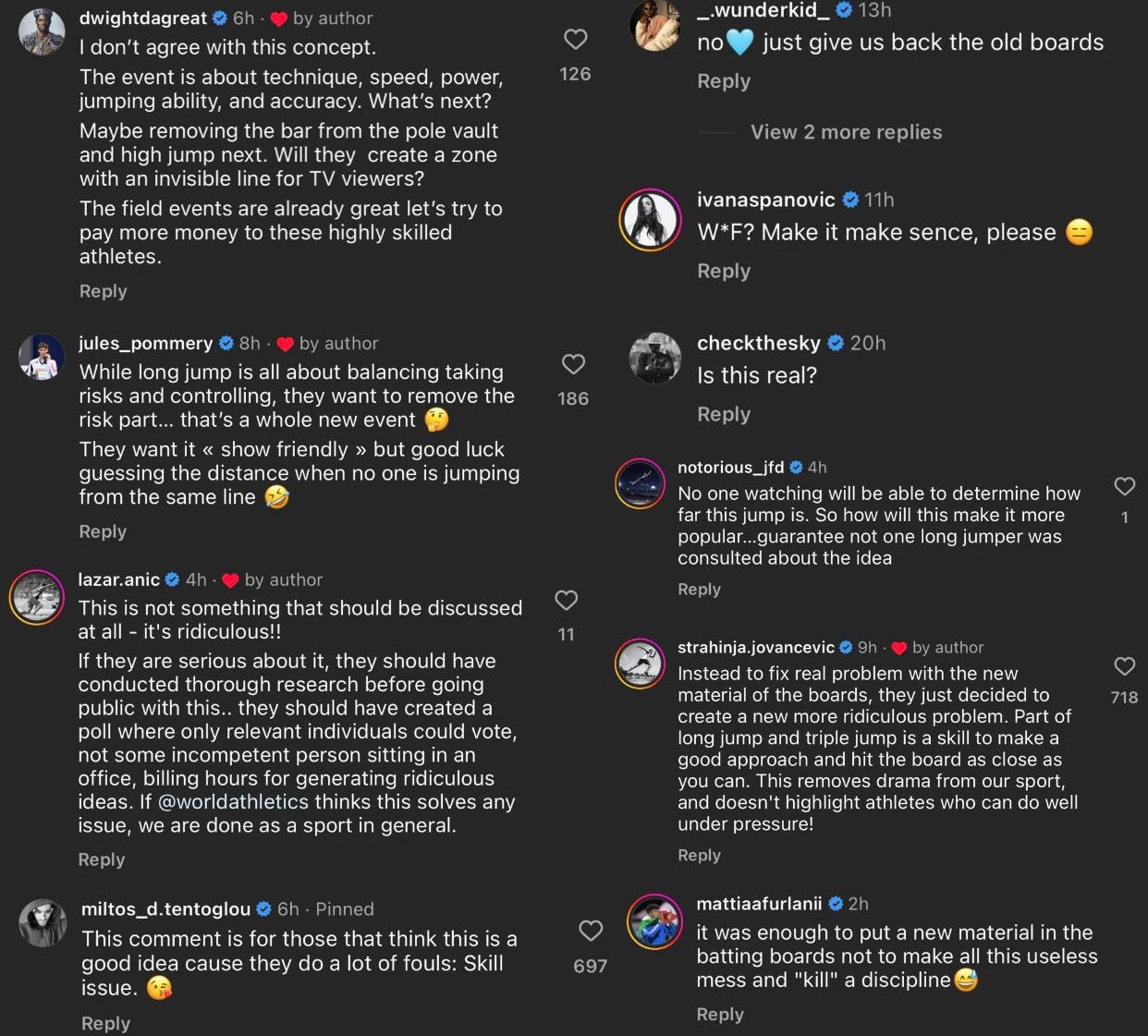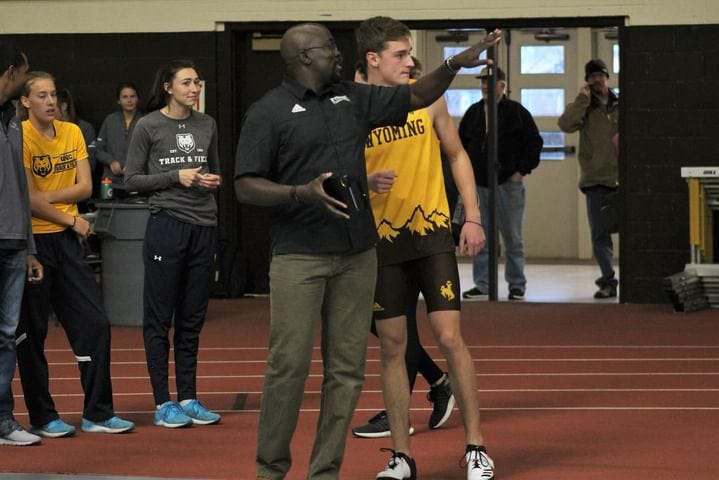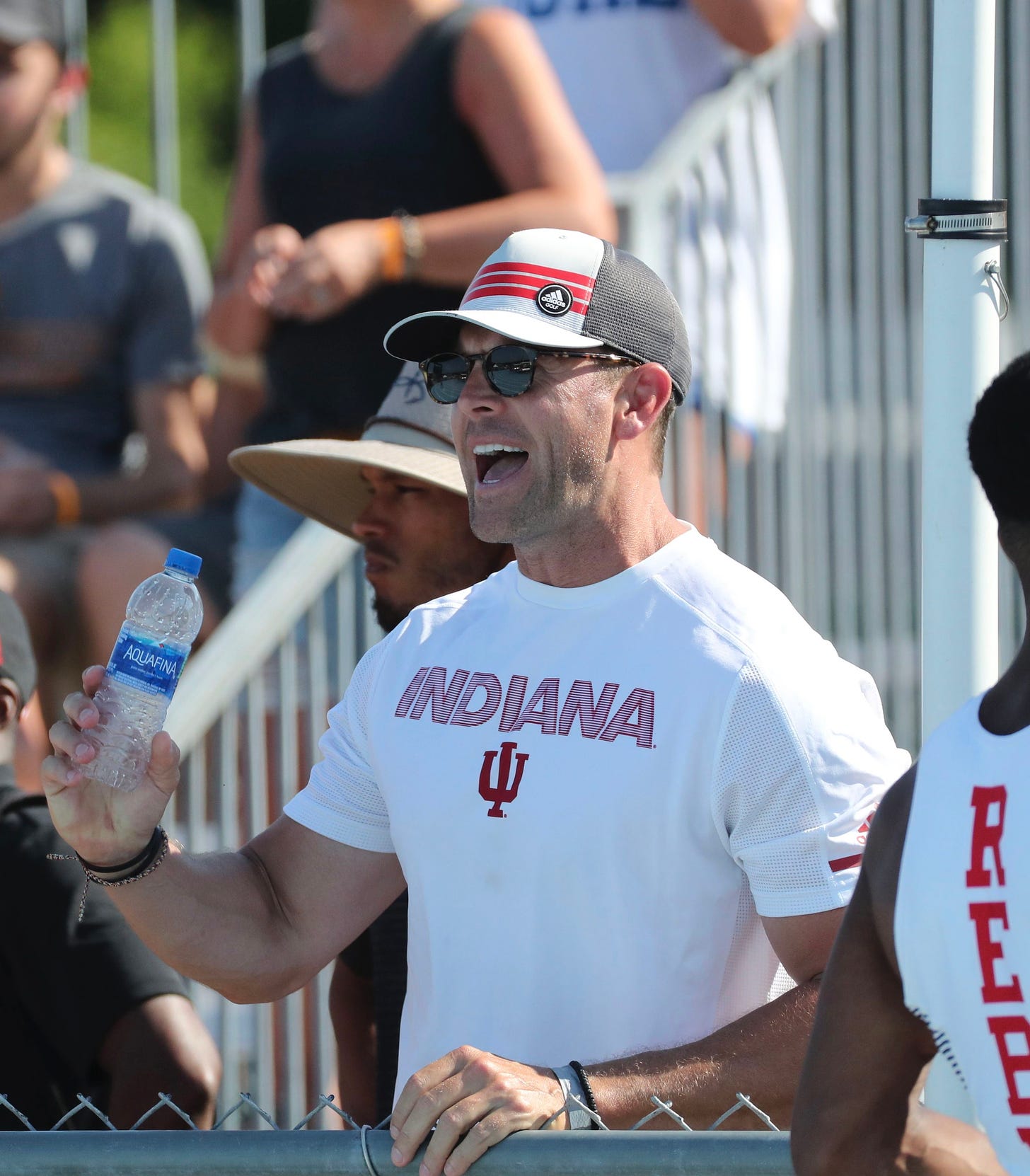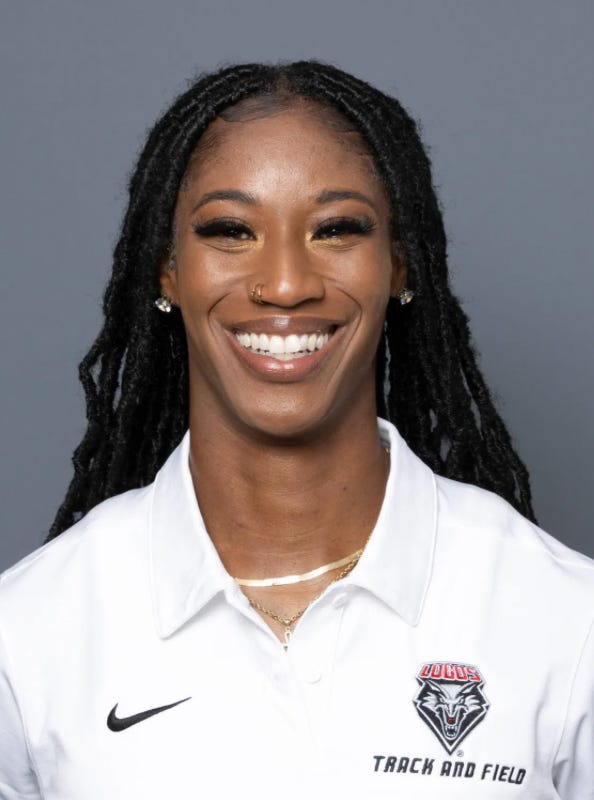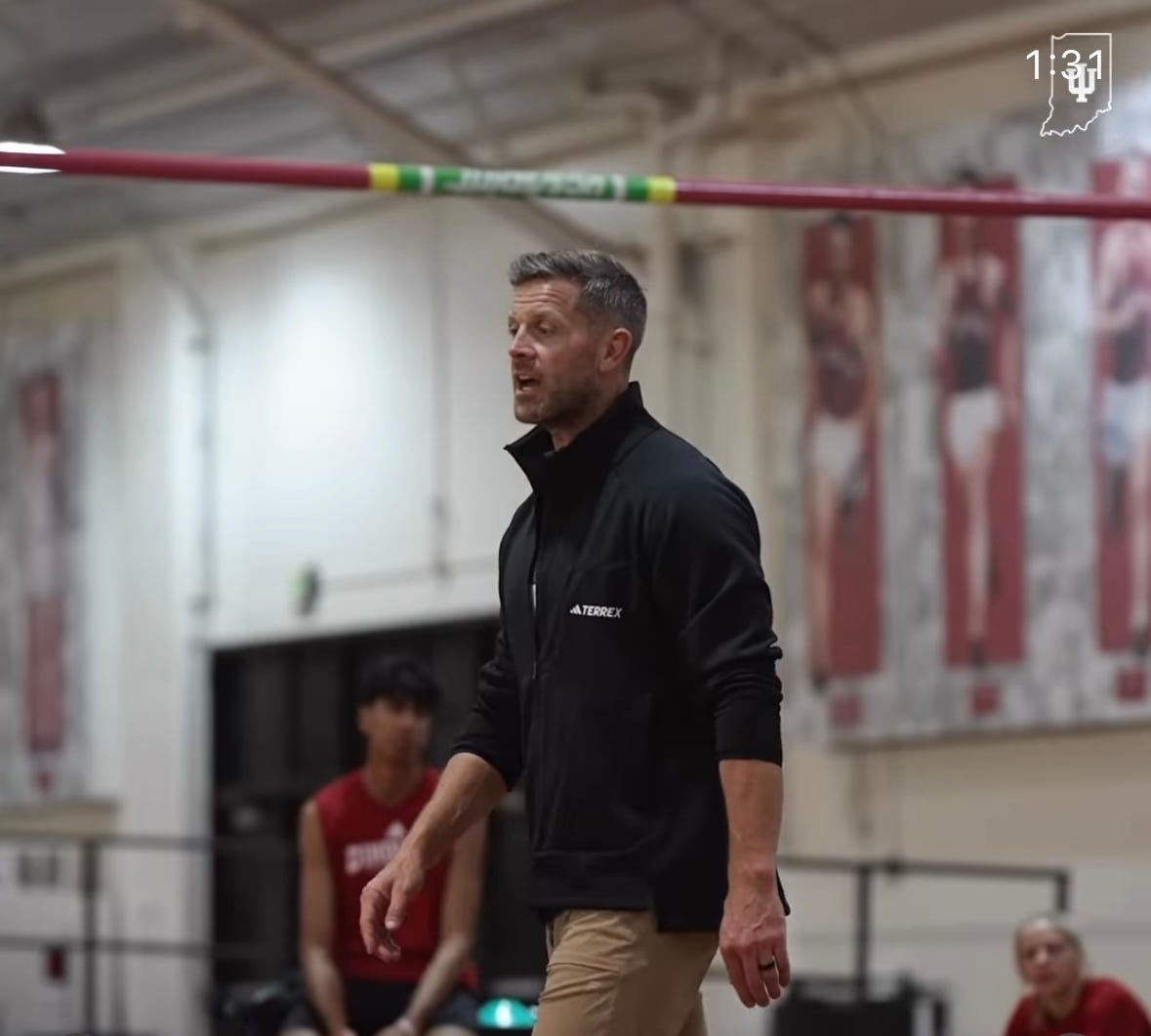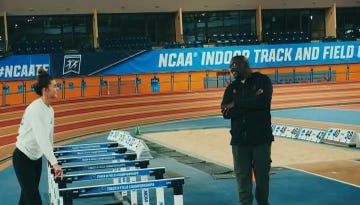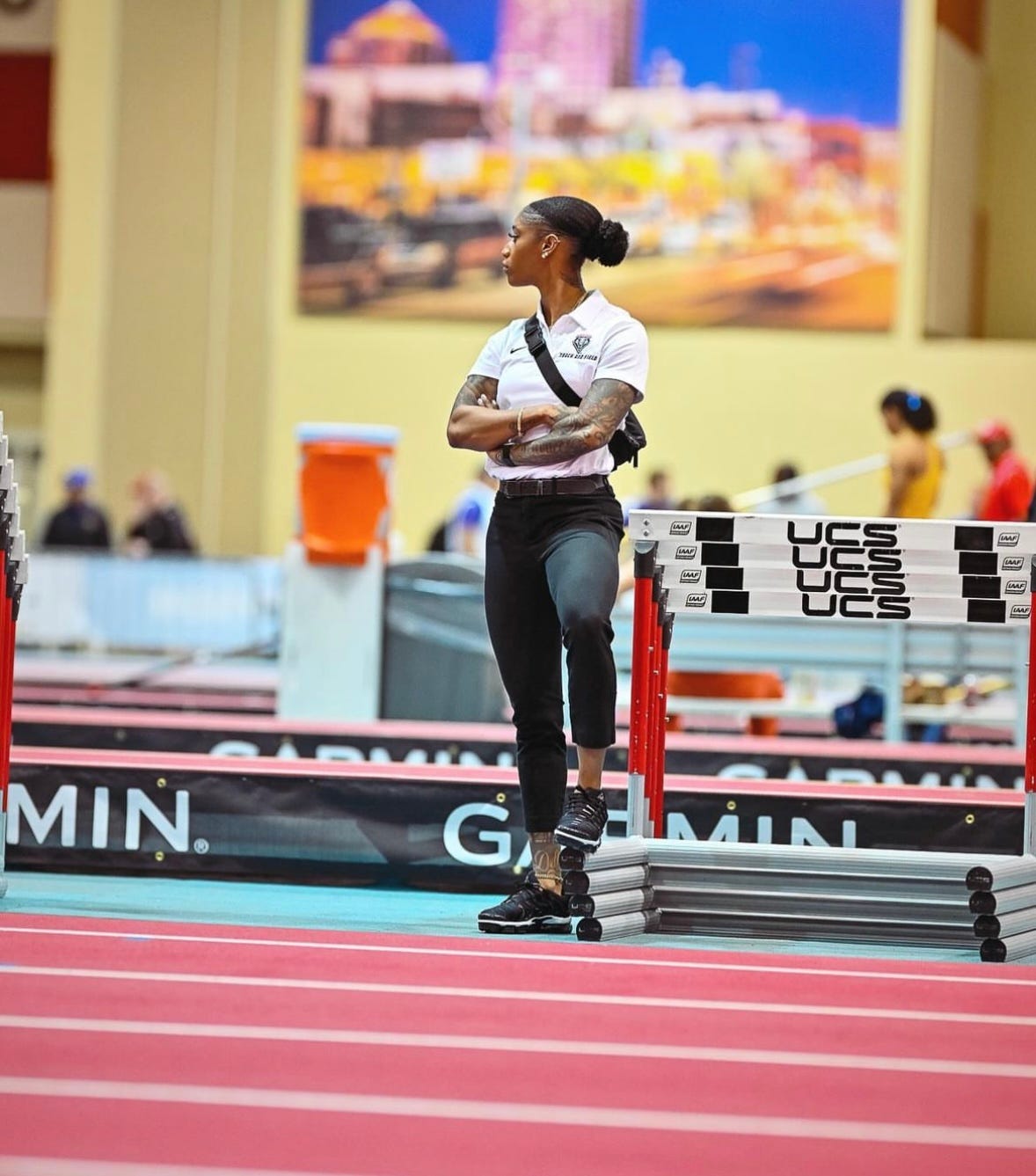If you follow the track & field world, then you know that World Athletics proposed a new Long Jump rule that eliminates the chances of fouls altogether. When the announcement went live, everyone had an opinion.
Let’s hear from the people coaching the next group of world-class jumpers!
Coach Mike Erb is back! You loved his 5 Tips to Increase Consistency on the Runway👏
Coach D’nara Jones from New Mexico joins us!👋
And a big welcome to Coach Quincy Howe from Wyoming!👏
Quincy Howe - Associate Head Track and Field Coach (Jumps and combined events) - University of Wyoming
The long jump, fundamentally has not changed much since its inception, beginning at least as far back as the start of the modern Olympics in 1896, the event required speed AND precision. Eliminating one of these first principle requirements essentially changes the entire event. Since the proposed rule change gets rid of the skill required to hit a 20cm target at velocities high enough to produce world class distances, the event then just becomes another speed contest with distance jumped as a substitute for time. The speed test is already a component of track and field, is it necessary to add another?
Do not misunderstand my stance here, I would love to see the true capability of human performance without the guard rails of the actual event rules, but not at the expense of changing the event. This rule proposal will not make the event better and it will not make the event run faster for TV. It will throw almost 130 years of familiarity away. This is not cinder to all weather surface tracks, sawdust and sand to high density foam, straight poles to fiberglass. This is akin to putting a ‘T’ out at home plate in an MLB game, lowering the rim to 9ft in the NBA, putting the uprights at either side of the end zones, I can go on with the absurdity, but you get my point.
The skill set to be a world class jumper and sprinter is rare. It is rarer than many people realize. I went down the world athletics all-time list in the LJ searching for sub 10 and sub 11, one hundred meter performers who were also top 100 in the LJ; there are only 3 men and 5 women folks: Carl Lewis, Kareem Street Thompson, Makusha, JJK (had to add the Queen even without a verifiable 100m time), Dreschler, Marion Jones, Blessing Okagbare and Tianna Bartoletta. These are the unicorns. I must give mention to Dwight Phillips and Jarrion Lawson who are sub-10.10. Would this list look different under different rules? Absolutely, but shouldn’t the people that have these specific set of skills have a place in track and field too?
The average 100m time for athletes who have not run world class (10.20 for men, 11.20 for women or faster, I know 10.20/11.20 isn’t fast anymore, I had to draw an arbitrary line) but are in the top 100 on the LJ list is 10.45s and 11.47s, I can draw a couple conclusions from it:
Unless you are one of the unicorns, sub 10 sprint velocities may be too high to adequately hit the 20cm target or even transfer enough vertical velocity to produce world record type jumps. The faster you approach the target, the more difficult it is to hit said target. This may be the biggest reason why most of the jumpers in the top 100 find the sweet spot in the 10 mids and 11 mids for 100m. Of course, a much bigger sample size and more robust statistics would be needed to confirm this
Coulda, Woulda, Shoulda: the 100m still reigns supreme, as a long jumper, if you coulda run the 100m and produce world class times, then you woulda because of the financial discrepancy in compensation and if you didn’t, then you probably shoulda.
This brings me to my last point for now. The long jump isn’t unpopular because people foul a lot, it is unpopular because the powers that be refuse to show the event. By world athletics calculations, 33 percent of jumps were fouls at worlds last year, doesn’t that mean 2 of 3 are fair? You try hitting a target moving at 11m/s and see how often you get the white flag; I would say 66% is amazingly accurate. We cannot and should not insult the intelligence of our viewership. Present the event in its true form and they will watch. Pay jumpers some money too and maybe the next unicorns won't step away from the event in favor of the 100m because they would like to make a living. Imagine what the event would look like again if the average 100m time comes down to 10.25s and 11.25s with the skill of high velocity accuracy.
Coach Mike Erb - Indiana University
First and foremost, I applaud the attempts by World Athletics to make track and field more entertaining for what is commonly referred to as the “common fan”. In a world where most track and field insiders are quick to disparage any attempt by a governing body to make changes aiming to increase the reach and popularity of track and field, it’s important to recognize that not all change is bad. To that end, the idea of creating a takeoff zone rather than a takeoff board is an interesting attempt to increase the number of big horizontal jumps, but unfortunately, it misses the mark.
Beyond the obvious skills like speed, strength, and power, it is also critical that an athlete be coordinated, proprioceptive, and spatially aware. While a common fan may only perceive the former attributes, we on the inside can appreciate the nuance of the latter. Rather than “dumbing down” the event and taking out a parameter that a common fan may not understand, I propose it would be better to provide context and explanation by way of commentators or short educational pieces featuring athletes and coaches.
But let’s not throw the baby out with the bathwater.🛁
As a coach, I’m always interested in collecting as much meaningful performance data as possible. Any time I can get “extra” information not perceivable by the naked eye (velocities, takeoff angles, ground contact times, stride lengths, etc.), it helps direct future decisions around training and technical patterns. To that end, the ability to know the “real distance” of horizontal jumps would be extremely interesting, if not valuable, and could provide insight into how an athlete is responding to a particular training cycle or stimulus. It would be cool to know how far someone flies, regardless of where they take off. For a non-expert, providing both distances would hammer home just how difficult it is to combine speed and power with coordination and spatial awareness.
So, if the technology is available, why not both? Much like a wind-aided time that won’t count for record or qualifying purposes, a “real distance” could be included with the “official distance”. This would be interesting to experts and common fans alike, as well as provide context to just how challenging it is to put all the technical modalities together.
Coach D’nara Jones - New Mexico
In regard to the new “Long Jump Trial: Zone Board Rule” I personally disagree. The reason I am not in favor of the new rule is due to the fact it takes authenticity away from the event which has been developed in order to determine proper measurement of a long jump attempt. It would be impossible to compare to old world records as well as the skill level requirement to perform skill level jumps would be expunged. This new rule has the ability to make the event more dramatic in a way where it is more complicated and unrealistic for viewership and running the actual event; It diminishes the purpose of a takeoff board. The idea appears to have been developed by individuals who do not participate in the event nor have the familiarity of the event. I believe it is best to keep the structure of the original design of the takeoff board. Do not attempt to fix something that is not broken.
What do you think?!
Wanna know more about our guests?!👏
Mike Erb started his collegiate coaching career at Redlands (California, D3) from 2002-2007 where he led the program to consecutive Top-10 finishes at the D3 NCAA Championships. From California, he moved to the University of Illinois as an assistant coach for Tonja Buford-Bailey, where he coached 6 BIG10 champions and 9 school record holders. He played an important role in guiding the Illinois women’s team to a BIG10 team title in 2013. He’s been a part of IU’s coaching staff since 2014 with continued success. 59 BIG10 Finalists, 10 BIG10 champions, and 8 USTFCCCA All-Americans. In the 2023 season, Coach Erb guided Paola Fernandez-Sola (outdoor long jump) and Hope Purcell (indoor pentathlon) to become BIG10 champions. You can find Coach Erb on Twitter/X and Instagram.
Quincy Howe is in his 19th season at Wyoming and seventh season as associate head track & field coach. Howe oversees UW’s jumpers. He was hired full-time in 2005 and has coached three NCAA Championship participants, 12 conference champions, 37 all-conference performers and 17 NCAA Regional qualifiers during his first nine years with the Cowboys and Cowgirls. Howe is widely considered the best jumper in Wyoming’s history and was inducted into UW Athletics Hall of Fame in 2009. He was a two-time All-American indoors in the triple jump in 2001 and 2002. He never lost to a conference foe in his four years in the Western Athletic Conference and Mountain West, as he won a total of eight conference titles. Howe went on to compete professionally for his native country of Trinidad & Tobago, placing third at the 2002 NACAC games and ninth at the 2002 Commonwealth Games. He was also a 2003 Pan-Am Games team selection, before joining the Wyoming coaching staff as a graduate assistant. He is a USATF Level I and Level II (jumps) certified coach. Howe’s Instagram.
D’nara Jones joined the UNM Track & Field coaching staff in July of 2023. With the Lobos, Jones assists with coaching sprinting and jumping events. Find Coach Jones on Instagram.
In her first year at Illinois State during the 2023 Indoor & Outdoor seasons, athletes coached by Jones produced a total of 50 PRs, 15 MVC Conference Top-10 performances, 6 All-Time Top-10 ISU performances and two school records.
During the 2023 Outdoor season, Jones led a total of 24 personal-best, including four All-Time history performances and two School History performances. Jones led Danielle Taets to a MVC Outdoor Conference third place finish in the Triple Jump, coached Madison Saunders to a MVC Outdoor Conference Runner up in the Triple Jump and Women’s NCAA West Region Qualifier for third-leg in the 4x100m Relay. Jones also led Melissa Parrella to a Women’s NCAA West Region Qualifier in the Long Jump and 17th place finish overall.





